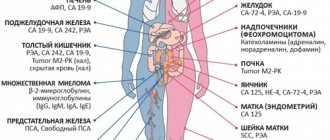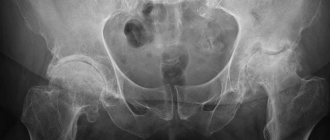Syphilis: symptoms and first signs, how to treat syphilis
Symptoms of syphilis depend on the stage of the disease, age and gender of the patient. The course of this venereal chronic disease may have its own characteristics in each specific case. It is even capable of being asymptomatic for the time being in a latent state.
A distinctive feature of treponema pallidum is its exceptional contagiousness, which is why it is so important to survey the population in order to avoid an epidemic of this disease.
The worst thing is when it has a hidden course and the person does not even realize that he is a carrier of syphilis and poses a danger to his family and others.
How is it transmitted?
Syphilis is caused by Treponema pallidum, which lives in the external environment for only 3 minutes. Therefore, the main route of transmission of the disease is sexual. Infection of the fetus is possible in utero (vertical route) or intrapartum, when the child passes through the mother’s birth canal.
The household route of transmission is uncommon; infection is possible from persons with the tertiary stage of syphilis, when treponema pallidum gets on dishes, linen, towels, etc. from decaying gums. Hematogenous transmission of syphilis through blood transfusion cannot be ruled out.
Cases of infection of medical workers through contact with the blood of a patient are not that rare. It is possible to become infected through “bloody” objects: a shared toothbrush, razor, manicure set, etc.
Syphilis - incubation period
The incubation period is a period of illness that lasts from the moment Treponema pallidum enters the body until the appearance of the first signs of syphilis (see photo), including chancre in combination with regional lymphadenitis. During this period, there is a gradual increase in the number of pathogen cells at the site of their introduction into the patient’s body. Treponema reproduces by division on average once every 30-32 hours.
This period of the disease is characterized by the absence of registered clinical and serological changes in the patient’s body; it lasts on average 3-4 weeks, it can be shortened to 8-15 days or lengthened to 108-190 days. A shortening of the incubation period occurs, as a rule, when the body is simultaneously infected from 2 sources; it is lengthened when taking antibiotics after the moment of infection, for example, for a sore throat, although it should be noted that an increase in the incubation period is not always due to the use of antibiotics.
The causative agent of the disease
The causative agent of syphilis, the pale spirochete, got its name due to poor staining with the main dyes used in research.
This bacterium was first discovered by Hoffmann and Schaudin in 1905. This microorganism can develop exclusively in a vacuum and quickly dies without a host organism. They can live a little longer in the cold than in a warm environment. Modern medicine knows three types of spirochetes:
- the causative agent of classical syphilis – treponema pallidum;
- the causative agent of endemic syphilis – treponema pallidum endemicum;
- The causative agent of tropical granuloma is treponema pallidum pertenue.
The spirochete can be detected during laboratory testing of material taken from the patient. The easiest way to destroy a spirochete on a surface is with any disinfectant. In the patient's body, the bacteria are destroyed with the help of antibiotics.
Primary syphilis
After the end of the incubation period, the characteristic first symptoms of syphilis appear. At the site of penetration of the treponemas, a hard chancre is formed, a specific round erosion or ulcer, with a hard, smooth bottom and “turned-up” edges. The size of the formations can vary from a couple of mm to several centimeters. Hard chancre can disappear without treatment. Erosions heal without a trace, ulcers leave flat scars.
The disappearance of chancre does not mean the end of the disease: primary syphilis only passes into a latent form, during which the patient is still infectious to sexual partners.
After the formation of hard chancre, local enlargement of the lymph nodes begins after 1-2 weeks. When palpated, they are dense, painless, and mobile; one is always larger than the others. After another 2 weeks, the serum (serological) reaction to syphilis becomes positive, from this moment primary syphilis passes from the seronegative stage to the seropositive stage. The end of the primary period: body temperature may rise to 37.8 - 380, sleep disturbances, muscle and headaches, and joint aches appear. Dense swelling of the labia (in women), the head of the penis and the scrotum in men is possible.
Syphilis
Primary syphilis
Primary syphilis begins from the moment when primary syphiloma, chancre, appears at the site of introduction of pale spirochetes.
A chancre is a single, round-shaped erosion or ulcer, which has clear, smooth edges and a shiny bluish-red bottom, painless and non-inflamed. The chancre does not increase in size, has scanty serous contents or is covered with a film or crust; a dense, painless infiltrate is felt at its base. Hard chancre does not respond to local antiseptic therapy. Chancre can be located on any part of the skin and mucous membranes (anal area, oral cavity - lips, corners of the mouth, tonsils; mammary gland, lower abdomen, fingers), but most often it is located on the genitals. Usually in men - on the head, foreskin and shaft of the penis, inside the urethra; in women - on the labia, perineum, vagina, cervix. The size of the chancre is about 1 cm, but can be dwarf - the size of a poppy seed and gigantic (d = 4-5 cm). Chancres can be multiple, in the case of numerous small lesions of the skin and mucous membranes at the time of infection, sometimes bipolar (on the penis and lips). When a chancre appears on the tonsils, a condition resembling a sore throat occurs, in which the temperature does not rise and the throat almost does not hurt. The painlessness of chancre allows patients not to notice it and not attach any importance. Soreness is distinguished by a slit-like chancre in the fold of the anus, and a chancre - felon on the nail phalanx of the fingers. During the period of primary syphilis, complications (balanitis, gangrenization, phimosis) may occur as a result of the addition of a secondary infection. Uncomplicated chancre, depending on the size, heals after 1.5 - 2 months, sometimes before signs of secondary syphilis appear.
5-7 days after the appearance of chancre, uneven enlargement and hardening of the lymph nodes closest to it (usually inguinal) develops. It can be unilateral or bilateral; the nodes are not inflamed, painless, have an ovoid shape and can reach the size of a chicken egg. Towards the end of the period of primary syphilis, specific polyadenitis develops - an enlargement of most subcutaneous lymph nodes. Patients may experience malaise, headache, insomnia, fever, arthralgia, muscle pain, neurotic and depressive disorders. This is associated with syphilitic septicemia - the spread of the causative agent of syphilis through the circulatory and lymphatic system from the lesion throughout the body. In some cases, this process occurs without fever or malaise, and the patient does not notice the transition from the primary stage of syphilis to the secondary stage.
Secondary syphilis
Secondary syphilis begins 2-4 months after infection and can last from 2 to 5 years. Characterized by generalization of infection. At this stage, all systems and organs of the patient are affected: joints, bones, nervous system, hematopoietic organs, digestion, vision, hearing. The clinical symptom of secondary syphilis is rashes on the skin and mucous membranes, which are widespread (secondary syphilides). The rash may be accompanied by body aches, headache, fever and may feel like a cold.
The rash appears in paroxysms: after lasting 1.5 - 2 months, it disappears without treatment (secondary latent syphilis), then appears again. The first rash is characterized by abundance and brightness of color (secondary fresh syphilis), subsequent repeated rashes are paler in color, less abundant, but larger in size and prone to merging (secondary recurrent syphilis). The frequency of relapses and the duration of latent periods of secondary syphilis vary and depend on the body’s immunological reactions in response to the proliferation of pale spirochetes.
Syphilides of the secondary period disappear without scars and have a variety of forms - roseola, papules, pustules.
Syphilitic roseolas are small round spots of pink (pale pink) color that do not rise above the surface of the skin and mucosal epithelium, which do not peel and do not cause itching; when pressed on, they turn pale and disappear for a short time. Roseola rash with secondary syphilis is observed in 75-80% of patients. The formation of roseola is caused by disturbances in the blood vessels; they are located throughout the body, mainly on the torso and limbs, in the face - most often on the forehead.
A papular rash is a rounded nodular formation protruding above the surface of the skin, bright pink in color with a bluish tint. Papules are located on the body and do not cause any subjective sensations. However, when pressing on them with a button probe, acute pain appears. With syphilis, a rash of papules with greasy scales along the edge of the forehead forms the so-called “crown of Venus.”
Syphilitic papules can grow, merge with each other and form plaques, becoming wet. Weeping erosive papules are especially contagious, and syphilis at this stage can easily be transmitted not only through sexual contact, but also through handshakes, kisses, and the use of common household items. Pustular (pustular) rashes with syphilis are similar to acne or chicken rash, covered with crust or scales. Usually occur in patients with reduced immunity.
The malignant course of syphilis can develop in weakened patients, as well as in drug addicts, alcoholics, and HIV-infected people. Malignant syphilis is characterized by ulceration of papulopustular syphilides, continuous relapses, impaired general condition, fever, intoxication, and weight loss.
Patients with secondary syphilis may experience syphilitic (erythematous) tonsillitis (severe redness of the tonsils, with whitish spots, not accompanied by malaise and fever), syphilitic seizures in the corners of the lips, and syphilis of the oral cavity. There is a general mild malaise that may resemble the symptoms of a common cold. Characteristic of secondary syphilis is generalized lymphadenitis without signs of inflammation and pain.
During the period of secondary syphilis, disturbances in skin pigmentation (leukoderma) and hair loss (alopecia) occur. Syphilitic leukoderma manifests itself in the loss of pigmentation of various areas of the skin on the neck, chest, abdomen, back, lower back, and armpits. On the neck, more often in women, a “Venus necklace” may appear, consisting of small (3-10 mm) discolored spots surrounded by darker areas of skin. It can exist without change for a long time (several months or even years), despite antisyphilitic treatment. The development of leukoderma is associated with syphilitic damage to the nervous system; upon examination, pathological changes in the cerebrospinal fluid are observed.
Hair loss is not accompanied by itching or flaking; its nature is:
- diffuse - hair loss is typical of normal baldness, occurring on the scalp, in the temporal and parietal region;
- small focal - a clear symptom of syphilis, hair loss or thinning in small patches located randomly on the head, eyelashes, eyebrows, mustache and beard;
- mixed - both diffuse and small-focal are found.
With timely treatment of syphilis, the hairline is completely restored.
When syphilis affects the vocal cords, hoarseness occurs.
Skin manifestations of secondary syphilis accompany lesions of the central nervous system, bones and joints, and internal organs.
Secondary syphilis
The infection generalizes by 3 months from the moment of infection and lasts 3-5 years, this period is characterized by multiple different-looking rashes in various organs and tissues, and therefore absolutely any symptoms depending on which system/organ is affected more and how much it is affected was previously compromised, that is, was he healthy at the time of the defeat - if so, then the manifestations of syphilis will be minimal.
During this period, there are prodromal symptoms (as with colds - general malaise, pain in muscles, joints, the appearance of fever), they last 7-10 days until the appearance of syphilomas (roseolous-papular rashes) - often these are small red spots with clear boundaries , not merging with each other. When pressed, they disappear, and then appear, or may turn yellow due to the destruction of red blood cells. These rashes do not destroy tissue and, with antisyphilitic treatment, disappear instantly. These rashes are recurrent in nature, that is, they appear again, but are not as pronounced and in much smaller quantities.
Tertiary syphilis
Tertiary syphilis is characterized by a long latent course. It can appear after 3-4 years (with complete absence of treatment, or with insufficient treatment). Most often, this form of pathology can be found in patients suffering from chronic alcoholism, tuberculosis or other infections.
During this period, a small amount of dense infiltrates, localized in the subcutaneous tissue or in deeper tissues, is found on the patient’s skin and mucous membranes. After some time, they disintegrate, and in their place painless ulcers appear, which scar only after a few months or years. It should be noted that such syphilides are not accompanied by subjective disorders and do not disturb the general condition of the patient. They contain very little pathogen, and therefore are practically non-contagious.
Congenital syphilis
It is transmitted from a sick mother when treponemes penetrate the placenta into the fetus. Syphilis infection can occur both during conception and much later. Regardless of the time of infection, pathological tissue changes are observed only in the VI-VII months of pregnancy, so active prevention of syphilis in the early stages will help give birth to a healthy child.
The possibility of transmitting pathogens through the father's sperm has not yet been proven, so all preventive measures usually concern the expectant mother. These include: identification of sick women in the early stages, full registration of pregnant women, monitoring the treatment of infected persons. In order to prevent the development of negative changes, mandatory regular examinations of pregnant women are carried out for the presence of treponemas and external signs of congenital syphilis.
Pathogenesis
The sexual transmission of syphilis is due to the rapid penetration of Treponema pallidum into the patient’s body through the mucous membrane.
Microscopic abrasions and cuts on the skin can be an excellent source of infection. Within a few hours, the bacterium penetrates the lymphatic system and blood, resulting in a systemic infectious process. The incubation period, which determines the duration of the latent period of the disease, lasts on average from 10 to 90 days. Modern research proves that treponema pallidum is sometimes found in the lymphatic system of an infected organism within 30 minutes after invasion. The infectious agent penetrates the central nervous system already in the early stages of syphilis. This is evidenced by abnormal results of examination of the cerebrospinal fluid of patients. If treatment is not carried out, the bacteria spread in the human body for 5-20 years after invasion and affect various internal structures. In later stages, treponema attacks the central nervous system, causing neurosyphilis. This form of the disease causes severe neurological and psychiatric complications.
The undulating course of syphilis is due to the gradual spread of the bacterium in the body and a change in the immune response. The human immune system does not have innate mechanisms of protection against the disease, so the production of antibodies does not contribute to the complete destruction of Treponema pallidum. As syphilis develops, the body's defense systems weaken, and already at the third stage of the pathology, practically no specific antibodies are detected in the patient's body.
Features of syphilis symptoms in men and women
The secondary and tertiary periods have almost the same symptoms. Differences in symptoms for men and women are present only in the primary period, when chancre appears on the genitals:
- gangrenous chancre on the penis - there is a possibility of self-amputation of the distal part of the penis;
- chancre on the cervix. Signs of syphilis, when hard chancre is located on the uterus in women, are practically absent and can only be detected during a gynecological examination;
- chancre in the urethra is the first sign of syphilis in males, which is manifested by discharge from the urethra, a dense penis and an inguinal bubo.
Diagnostics
Syphilis is diagnosed by examination, characteristic signs and laboratory tests:
- Examination by a dermatovenerologist. He asks the patient in detail about the course of the disease, examines the skin, genitals, and lymph nodes.
- Detection of treponema or its DNA in the contents of gummas, chancre, syphilides using dark-field microscopy, direct immunofluorescence reaction, and PCR.
- Instrumental studies: search for gummas using ultrasound, MRI, CT, X-rays, etc.
- Carrying out various serological tests: Non-treponemal - search for antibodies against treponema membrane lipids and phospholipids of tissues destroyed by the pathogen (Wassermann reaction, VDRL, rapid plasma reagin test). The result obtained may be false positive, i.e. show syphilis where there is none. Treponema - search for antibodies to Treponema pallidum (RIF, RPHA, ELISA, immunoblotting, RIBT).
Remember that for such a serious disease you cannot diagnose yourself “on the Internet” by reading about syphilis and its symptoms. The fact is that the rash and other changes can visually copy those of completely different diseases, so that even doctors are periodically misled.
Diagnosis of syphilis
Tests for syphilis, visual examination of the patient and laboratory tests are the main methods for diagnosing the disease. The range of tests can be very wide, it all depends on what manifestations of syphilis disease are found in the patient. The list of main methods for detecting the disease includes blood tests, which allow the doctor to obtain the most complete picture of the condition of the patient’s body. The most common studies include:
- Serological analysis - the technique is designed to detect immunoglobulins, the production of which is characteristic of the body of a person with syphilis. The Wasserman reaction (complement fixation) is based on the adsorption of complement by a complex with an antigen.
- Microprecipitation reaction is a reaction of antigen and antibodies that is detected using a quick and simple medical test.
- Immunofluorescence reaction (RIF) - a method used to detect syphilis in the latent phase. One of the most difficult, but also the most accurate way to detect a disease.
- Bacterioscopic analysis - an imprint of the chancre is taken for examination. The method is effective only in the first four weeks after infection.
Consequences of syphilis
If left untreated, syphilis gradually spreads throughout the body and affects more and more healthy tissues and organs. Sometimes there is temporary relief, after which the patient’s condition sharply worsens. Complications of syphilis depend on its stage.
Primary syphilis can be complicated by the following conditions:
- tissue necrosis at the location of the chancre;
- balanitis;
- phimosis;
- paraphimosis
With secondary syphilis, the following complications are noted:
- damage to internal organs by syphilis;
- damage to the nervous system;
- bone damage.
Complications of tertiary syphilis are:
- damage to internal organs;
- brain damage;
- Treponema damage to the tissues of the neck and face;
- pathological fractures of bones when they are affected by syphilis;
- bleeding as a result of vascular rupture.
Types of syphilis
In total, there are two large groups into which types of syphilis can be classified - congenital and acquired. In turn, these groups are divided into categories, which include types of syphilis by stage. The following list briefly summarizes the modern classification of the various manifestations of the disease:
- primary siliphis;
- secondary syphilis: early latent form; secondary recurrent syphilis; late latent form;
- tertiary syphilis;
- fetal syphilis;
- early congenital siliphis;
- late congenital siliphis;
- latent congenital syphilis;
- neurosyphilis.
How to treat syphilis?
The treatment of syphilis is approached in a comprehensive manner, taking into account many individual factors (age, gender of the patient, stage of development of the disease, the presence of concomitant diseases, general condition of the body, etc.). In addition, all sexual partners of the suspected patient should also be examined for the presence of syphilis and, if necessary, undergo a course of therapy.
If a patient has primary syphilis, then everyone who has had sexual intercourse with him over the past three months must undergo examination and tests. In the case of secondary syphilis - everyone who had contact with the patient over the past year. The timeliness of the therapy itself, as well as the correct selection of modern medications, is important for achieving success in the treatment of this disease.
The most effective method of treating syphilis is the introduction of water-soluble penicillins into the body. This therapy is carried out in a hospital setting for 24 days with injections every 3 hours. The causative agent of syphilis is quite sensitive to penicillin antibiotics, but there is a possibility of an allergic reaction to these drugs or the ineffectiveness of such therapy. In this case, penicillin is replaced with drugs of the tetracycline, macrolide, and fluoroquinolone groups. In addition to antibiotics, natural immune stimulants, vitamins, and immunostimulants are also indicated for syphilis.
Treatment
Drug therapy is selected individually after accurate laboratory confirmation of syphilis. Of the variety of antimicrobial drugs, doctors most often prescribe water-soluble penicillins to patients. Despite decades of use of penicillin derivatives as antibacterial therapy, Treponema pallidum has not acquired resistance to these drugs. The treatment regimen is selected in such a way as to maintain the optimal concentration of the drug in the patient’s blood. If an allergic reaction to penicillin derivatives is detected, the doctor selects other medications.
Other treatment options:
- Doxycycline. This antibiotic is an excellent alternative to penicillin derivatives and is suitable for the treatment of early and late latent syphilis.
- Erythromycin, tetracycline derivatives and cephalosporins when bacterial resistance to penicillin is detected.
- Derivatives of bismuth and arsenic in the tertiary form of infection. These are highly toxic drugs prescribed only after hospitalization.
To select therapy, it is advisable to contact a specialized clinic. During the consultation, the doctor will explain the treatment regimen to the patient, indicate the dosage of medications and the regimen. When using antibiotics, it is important to take your medications regularly. Self-treatment of syphilis is unacceptable due to the risk of developing dangerous complications.
Prevention
Standard preventive measures include avoiding casual sex, using condoms, and to prevent occupational syphilis, wearing disposable latex gloves before examination, manipulation and surgery.
Condoms are not 100% protection - the chancre can be located extragenitally (pubis, perineum), and with secondary syphilis, a “necklace of Venus” is formed on the skin. In these cases, the infection from syphilis is transmitted by contact to the partner’s skin.
With syphilis, lifelong immunity is not formed. Having successfully recovered from this disease, you can become infected and get sick again. In this case, the disease will be just as severe. Therefore, there are no vaccinations against syphilis, and there cannot be.
Prevention of syphilis
General prevention of syphilis is the same as for other sexually transmitted diseases. It includes monitoring patients after their treatment and recording all diagnosed cases of the disease. After treatment for syphilis, patients are registered at the clinic; each stage of syphilis has its own registration period, determined by medical instructions. To prevent the spread of infection, all sexual contacts of the patient must be taken into account, and preventive treatment should be carried out for people who are in close contact with the patient. Patients are prohibited from having sexual relations and becoming blood donors.
When syphilis is detected, it is imperative that the patient’s regular partner be treated, since if the causative agent of the disease is present in his body, re-infection is possible, even if syphilis itself is in a latent stage.
Personal prevention of syphilis is to use a condom during all sexual contacts. Fidelity to one permanent partner can also be a good way of protection. If you suspect that your partner may have syphilis, you should immediately go to the hospital for testing. The sooner treatment for the disease is started, the higher the chance that it will go away quickly and without consequences for the body.
This article is posted for educational purposes only and does not constitute scientific material or professional medical advice.
Forecast
It all depends on the stage of development of the disease and the treatment method. If therapy was started in the early stages of the disease (primary, secondary and early latent syphilis) and is carried out using treponemocidal antibiotics, then in almost all cases without exception, a complete clinical cure occurs, and relapses of early syphilis and the occurrence of late forms of syphilis are prevented.
Treatment of syphilis in pregnant women in the first half of pregnancy in most cases guarantees the birth of a healthy baby. In the case of congenital syphilis, the prognosis is favorable if treatment of the disease was started in a timely manner. Treatment of later forms of the disease is less successful, since it only slows down the progression of the disease, but in all cases it can restore the impaired function of the affected organs and lead to negative serological reactions.











